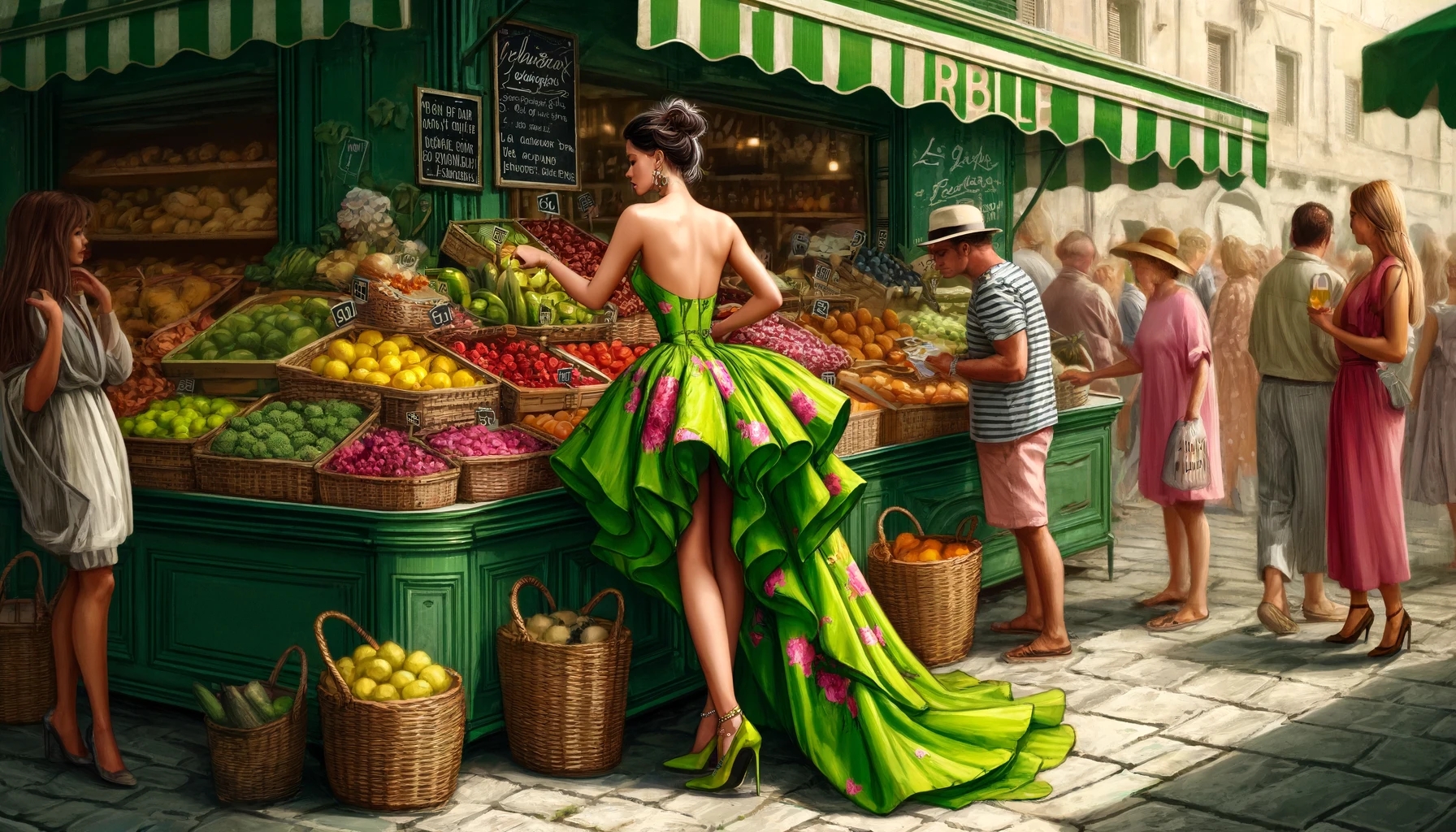Planning a conceptual setup for a photo session requires a blend of creativity, meticulous planning, and technical knowledge. The process begins with a clear vision of what you want to achieve, followed by detailed preparation to ensure everything aligns with your concept. Here’s a step-by-step guide to help you plan a successful conceptual photo session.
In this captivating image mockup, a fashionable woman stands out in a vibrant green dress adorned with pink floral accents while shopping at a bustling French market. The dramatic, flowing design of her strapless dress perfectly complements the lively atmosphere of the street market, where colorful produce is beautifully displayed in wicker baskets. Other shoppers in casual attire add to the charm and authenticity of the scene, emphasizing that in France, no outfit can be too beautiful for everyday activities.

Firstly, define your concept clearly. This involves brainstorming and deciding on the theme, mood, and story you want to convey through your photographs. Whether it’s a vintage-inspired shoot, a high-fashion editorial, or a surreal art piece, having a clear concept will guide all your subsequent decisions. Create a mood board with images, color palettes, and textures that reflect your vision. This will help you communicate your ideas to your team and keep the shoot cohesive.
Next, choose the right location. The location should enhance your concept and provide the necessary backdrop for your images. Scout multiple locations and consider how the lighting, environment, and available space align with your vision. For a vintage theme, you might select an old mansion or a retro diner, while a fashion shoot could benefit from a sleek studio or urban setting. Pay attention to practical aspects like accessibility, permits, and weather conditions if you’re shooting outdoors.
Once you have your location, plan the logistics. This includes scheduling the date and time of the shoot, considering the best time of day for natural light, and coordinating with all involved parties. Create a shot list outlining the specific images you want to capture. This ensures you stay focused and make the most of your time on set.
Assemble a team of professionals who can help bring your vision to life. This may include a photographer, models, makeup artists, hair stylists, wardrobe stylists, and assistants. Communicate your concept clearly to each team member and provide them with the mood board and any other references. Collaboration is key, as each person’s expertise will contribute to the overall success of the shoot.
Prepare your equipment and props. Make a checklist of all the gear you’ll need, including cameras, lenses, lighting equipment, and any special tools or accessories. Ensure everything is in working order and pack backups if possible. Props and wardrobe are essential in reinforcing your concept. Select items that complement your theme and add depth to your images. For instance, for a retro shoot, vintage clothing, old suitcases, and classic cars can enhance the authenticity of your photos.
On the day of the shoot, arrive early to set up and address any last-minute details. Test your lighting and camera settings, arrange props, and ensure everyone knows their role and the schedule for the day. During the shoot, be flexible and open to creative changes. Sometimes, the best shots come from spontaneous ideas and unexpected moments. Provide direction to your models but also allow them to bring their own interpretation to the concept.
After the shoot, the post-production process is crucial. Review all the images, select the best ones, and edit them to match your vision. Pay attention to color grading, retouching, and any special effects that enhance your concept. The final presentation of your images should be consistent with the mood and story you set out to create.
In summary, a successful conceptual photo session is a result of thorough planning, clear communication, and creative collaboration. By defining your concept, choosing the right location, planning logistics, assembling a skilled team, preparing your equipment and props, and executing with flexibility, you can bring your photographic vision to life. The process is as much about preparation as it is about creativity, ensuring that every element works together to create compelling and cohesive images.
Leave a Reply